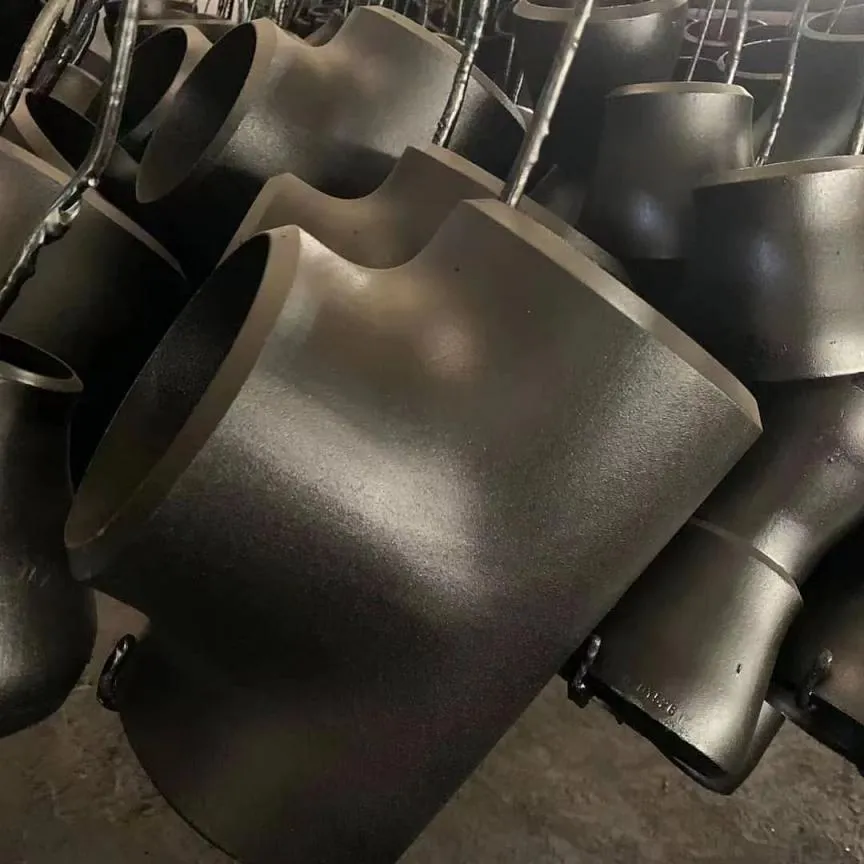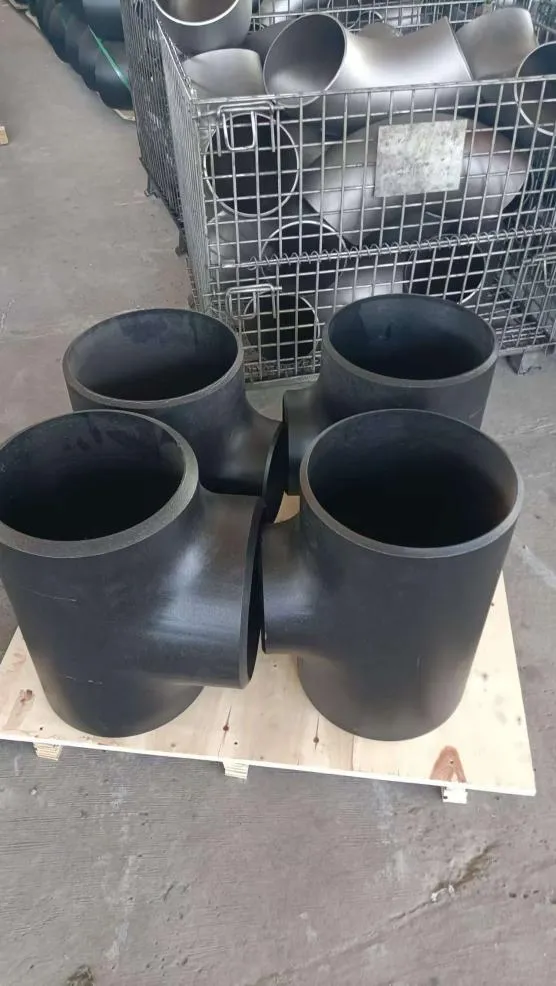-
Cangzhou Yulong Steel Co., Ltd.
-
Phone:
+86 13303177267 -
Email:
admin@ylsteelfittings.com
- English
- Arabic
- Italian
- Spanish
- Portuguese
- German
- kazakh
- Persian
- Greek
- French
- Russian
- Polish
- Thai
- Indonesian
- Vietnamese
- Zulu
- Korean
- Uzbek
- Hindi
- Serbian
- Malay
- Ukrainian
- Gujarati
- Haitian Creole
- hausa
- hawaiian
- Hebrew
- Miao
- Hungarian
- Icelandic
- igbo
- irish
- Japanese
- Javanese
- Kannada
- Khmer
- Rwandese
- Afrikaans
- Albanian
- Amharic
- Armenian
- Azerbaijani
- Basque
- Belarusian
- Bengali
- Bosnian
- Bulgarian
- Catalan
- Cebuano
- China
- China (Taiwan)
- Corsican
- Croatian
- Czech
- Danish
- Esperanto
- Estonian
- Finnish
- Frisian
- Galician
- Georgian
- Kurdish
- Kyrgyz
- Lao
- Latin
- Latvian
- Lithuanian
- Luxembourgish
- Macedonian
- Malgashi
- Malayalam
- Maltese
- Maori
- Marathi
- Mongolian
- Myanmar
- Nepali
- Norwegian
- Norwegian
- Occitan
- Pashto
- Dutch
- Punjabi
- Romanian
- Samoan
- Scottish Gaelic
- Sesotho
- Shona
- Sindhi
- Sinhala
- Slovak
- Slovenian
- Somali
- Sundanese
- Swahili
- Swedish
- Tagalog
- Tajik
- Tamil
- Tatar
- Telugu
- Turkish
- Turkmen
- Urdu
- Uighur
- Welsh
- Bantu
- Yiddish
- Yoruba

Jan . 10, 2025 16:12 Back to list
The Role of Butt Weld Tees in Chemical and Petrochemical Industries
Butt weld tees are indispensable components in the piping systems of chemical and petrochemical industries. These fittings allow for the efficient branching of pipes, which is critical in the transportation of various chemicals, fuels, and gases across large industrial facilities. Given the demanding nature of these industries, which often deal with corrosive substances, high temperatures, and high-pressure environments, the selection of the right materials and connection methods is crucial. Butt weld tees offer several advantages that make them ideal for use in such harsh conditions. This article explores the role of butt weld tees in the chemical and petrochemical industries, highlighting their functionality, benefits, and applications.

What Are Butt Weld Tees?
A tee butt weld is a type of pipe fitting used to connect three sections of pipe. The fitting has one main pipe run with a lateral branch, creating a "T" shape. The connection between the branch and the main pipe is made through a butt weld, which involves fusing the edges of the pipes together to form a strong and durable joint. This welding method provides a smooth, robust connection with minimal disruption to the flow, which is essential in industries where consistent performance and safety are paramount.
Advantages of Butt Weld Tees in Chemical and Petrochemical Applications
Butt weld tees offer several advantages in the chemical and petrochemical industries, where durability, resistance to pressure, and chemical compatibility are critical. One of the key benefits is the strength and integrity of the weld. Since the joint is welded, the connection between the pipes is as strong as the pipes themselves, ensuring long-lasting reliability. This is especially important in environments where pipes are subject to internal pressure fluctuations, high temperatures, and potentially corrosive chemicals.
Another major advantage is the smooth interior of the weld. Butt welds are known for producing a smooth, seamless interior with no joints or grooves, minimizing the potential for turbulence or flow disruption. In systems transporting chemicals or petrochemicals, maintaining an uninterrupted flow is essential to avoid contamination, ensure efficient processes, and reduce the risk of accidents.
Additionally, welded tee can handle high-pressure and high-temperature environments, making them suitable for applications such as steam lines, gas pipelines, and high-pressure reactors. The robustness of the welded joint ensures that the system can maintain integrity even under extreme conditions, reducing the likelihood of leaks or system failure.
Applications in Chemical and Petrochemical Industries About Butt Weld Tees
Butt weld tees are used across a wide range of applications in both the chemical and petrochemical industries. These industries often involve complex piping networks designed to transport liquids, gases, and chemicals to various stages of production. Butt weld tees provide an essential function in these networks by allowing for the safe and efficient distribution of these materials through branching connections.
In chemical processing plants, butt weld tees are often used in reactor systems, where multiple chemical streams need to be combined or diverted at specific points in the system. These tees allow for precise control over the flow of chemicals and ensure that the chemical reactions occur under the desired conditions. For example, in reactors dealing with volatile chemicals, butt weld tees ensure a secure and leak-proof connection that minimizes the risk of hazardous spills or accidents.
In the petrochemical sector, butt weld tees are employed in pipelines that transport raw materials such as crude oil, natural gas, and refined petroleum products. These industries rely heavily on reliable, high-quality piping systems, and butt weld tees provide the strength and durability needed to handle the corrosive nature of the materials involved. The ability to withstand the internal pressure and temperature fluctuations typically found in oil and gas pipelines makes these fittings a go-to choice for ensuring long-term operational safety.

Material Considerations for Butt Weld Tees
The materials used in the manufacture of butt weld tees play a crucial role in their performance and durability. In the chemical and petrochemical industries, where pipes are often exposed to corrosive substances, choosing the right material for a butt weld tee is essential for preventing premature degradation and ensuring the system's longevity.
Common materials used for butt weld tees include carbon steel, stainless steel, and various alloy steels. Carbon steel is often chosen for its affordability and strength, but it may not offer the necessary resistance to corrosive chemicals and extreme temperatures. For more demanding applications, such as those in the petrochemical industry, stainless steel and alloy steels like Inconel or Hastelloy are frequently used. These materials provide enhanced corrosion resistance, ensuring that the piping system remains intact and operational even in the most aggressive environments.
The selection of the material is often determined by factors such as the type of chemicals being transported, operating temperatures, and pressure requirements. For instance, in systems that handle highly corrosive chemicals, such as acids or alkalis, manufacturers may choose to use corrosion-resistant alloys to extend the lifespan of the system and reduce the likelihood of leaks and failures.
Maintaining Butt Weld Tees in Harsh Environments
Given the critical role that butt weld tees play in ensuring the integrity of piping systems, maintaining these fittings is essential for the smooth operation of chemical and petrochemical facilities. Regular inspections and monitoring are necessary to identify signs of wear or corrosion before they lead to more significant issues.
In particular, attention should be paid to the weld integrity of the butt weld tees. As the welded joint is crucial for the fitting’s performance, any cracks, fatigue, or signs of weakening can compromise the entire system. Additionally, environmental factors such as temperature fluctuations, chemical exposure, and pressure surges can accelerate wear and tear on the system. Routine inspections, including ultrasonic testing and visual examinations, can help identify potential issues early on and ensure the system’s continued operation without costly downtime or safety risks.
Moreover, in highly corrosive environments, regular protective coatings and corrosion inhibitors can be applied to the welds and piping to extend their lifespan. In some cases, the use of ceramic linings or cladding may also be employed to protect butt weld tees from aggressive chemicals, particularly in systems handling highly reactive substances.
Latest news
-
ANSI 150P SS304 SO FLANGE
NewsFeb.14,2025
-
ASTM A333GR6 STEEL PIPE
NewsJan.20,2025
-
ANSI B16.5 WELDING NECK FLANGE
NewsJan.15,2026
-
ANSI B16.5 SLIP-ON FLANGE
NewsApr.19,2024
-
SABS 1123 FLANGE
NewsJan.15,2025
-
DIN86044 PLATE FLANGE
NewsApr.19,2024
-
DIN2527 BLIND FLANGE
NewsApr.12,2024
-
JIS B2311 Butt-Welding Fittings LR/SR 45°/90° /180°Seamless/Weld
NewsApr.23,2024











